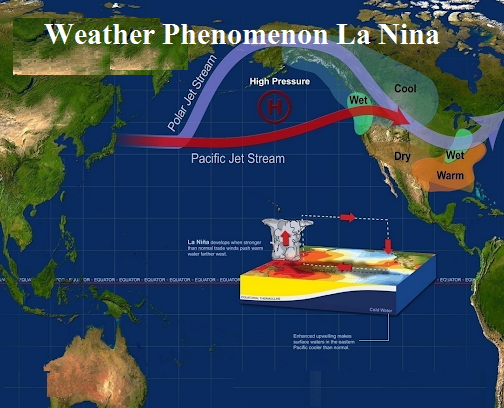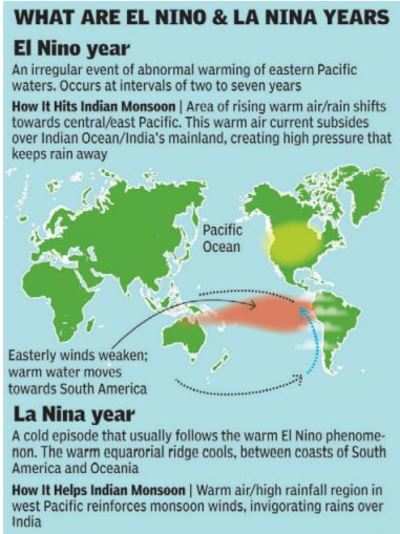LA NINA// CAUSES AND EFFECTS
La Niña means "The Little Girl." La Niña is sometimes called El Viejo (Old Man), anti-El Niño, or simply "a cold event" or"a cold episode"
La Niña is a weather pattern that occurs in the Pacific Ocean. In this pattern, strong winds blow warm water at the ocean’s surface from South America to Indonesia. As the warm water moves west, cold water from the deep rises to the surface near the coast of South America
.
During normal conditions in the Pacific ocean, trade winds blow west along the equator, taking warm water from South America towards Asia. To replace that warm water, cold water rises from the depths — a process called upwelling. El Niño and La Niña are two opposing climate patterns that break these normal conditions. Scientists call these phenomena the El Niño-Southern Oscillation (ENSO) cycle. El Niño and La Niña can both have global impacts on weather, wildfires, ecosystems, and economies. Episodes of El Niño and La Niña typically last nine to 12 months, but can sometimes last for years. El Niño and La Niña events occur every two to seven years, on average, but they don’t occur on a regular schedule. Generally, El Niño occurs more frequently than La Niña.
La Niña is caused by an interaction between the Pacific Ocean and the atmosphere above. However, it can have effects on weather all over the world. These changes in the atmosphere can lead to more lightning activity within the Gulf of Mexico and along the Gulf Coast. Also, the environmental conditions during La Niña can lead to more tropical cyclones—which include hurricanes—forming in the deep tropics (near the islands in the Caribbean, for example).
How does it impact India?
La Niña is responsible for bringing cold air from Siberia and South China to the Indian subcontinent, which results in a north-south low-pressure system when it interacts with the tropical heating conditions here. The cold conditions associated with these troughs can envelope the southern parts of India as well and can extend till Tamil Nadu. However, they do not affect Northeast India.In the winter months, the La Nina causes a very cold wave-like jet stream to flow across Afghanistan, Iran and the Hindu Kush mountains. These strong and cold winds impact the degree of cold in India.
Earlier, the weather phenomenon had led to the unexpected heavy rains in October. It had also caused a delayed withdrawal of the southwest monsoon from the country on October 25, which was the seventh-most delayed retreat since 1975.
In January and February, temperatures in India are likely to touch 3 degrees Celsius in some northern areas before recovering, Bloomberg reported.
Weather changes because of La Nina:
- The Horn of Africa and central Asia will see below average rainfall due to La Niña.
- East Africa is forecast to see drier-than-usual conditions, which together with the existing impacts of the desert locust invasion, may add to regional food insecurity.
- It could also lead to increased rainfall in southern Africa.
- It could also affect the South West Indian Ocean Tropical Cyclone season, reducing the intensity.
- Southeast Asia, some Pacific Islands and the northern region of South America are expected to receive above-average rainfall.
- In India, La Niña means the country will receive more rainfall than normal, leading to floods.













0 Comments